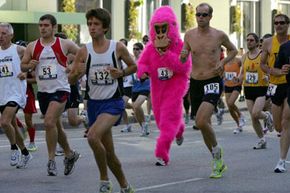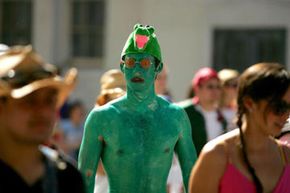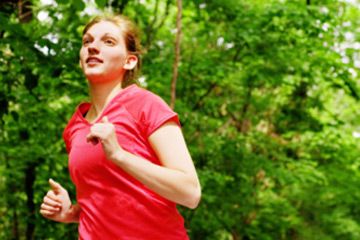It's a breezy May morning on Howard Street in San Francisco. The road is choked with tens of thousands of runners anxiously awaiting the start of one of the most legendary footraces in the world. As it begins, lean athletes from across the globe stride swiftly down the pavement, jockeying for positions in the crowd of competitors. Then something strange happens. As the trim racers in tank tops and shorts disappear down the road, costumed participants begin to appear. Spongebob Squarepants waddles down the street followed by a man dressed as a giant beer bottle. Some women are wearing bikinis; some people are wearing nothing at all. And instead of sports drinks, these revelers are guzzling alcohol. Sound crazy? Well it is. It's the Bay to Breakers.
A staple of San Francisco culture for nearly a century, the Bay to Breakers was initially created to lift the spirits of a city devastated by the 1906 earthquake. The first contest, held on Jan. 1, 1912, was dubbed the Cross-City Race. That year, 150 runners completed the 7.51-mile (12.1-kilometer) course through downtown, including Bobby Vlught, a St. Mary's College student and part-time newspaper copy-boy who won, with a time of 44 minutes, 10 seconds [source: Bay to Breakers].
Advertisement
The race enjoyed some popularity over the next few decades, but by 1963, registration dwindled to just 25 runners. In an effort to revamp the race, its name was changed to the Bay to Breakers in 1964 and the San Francisco Examiner assumed sponsorship in 1966. Participation in the event increased steadily through 1983 when officials changed the race distance to 7.46 miles, or exactly 12 kilometers. In 1986, 110,000 people took part in the Bay to Breakers, and the Guinness Book of World Records declared it the largest footrace in history [source: Bay to Breakers].
Today, the race attracts runners from all over the world, including course record holder Sammy Kitwara of Kenya, who finished the race in 2009 with a time of 33 minutes, 31 seconds. For San Franciscans, however, the Bay to Breakers isn't about speed. It's about having a good time and showcasing their home as one of the more exotic cities in the world.
More than 2.2 million people have participated in the Bay to Breakers in its 99-year history [source: Wildermuth]. If you're planning on joining the Bay to Breakers ranks, what should you expect on race day?
Advertisement


